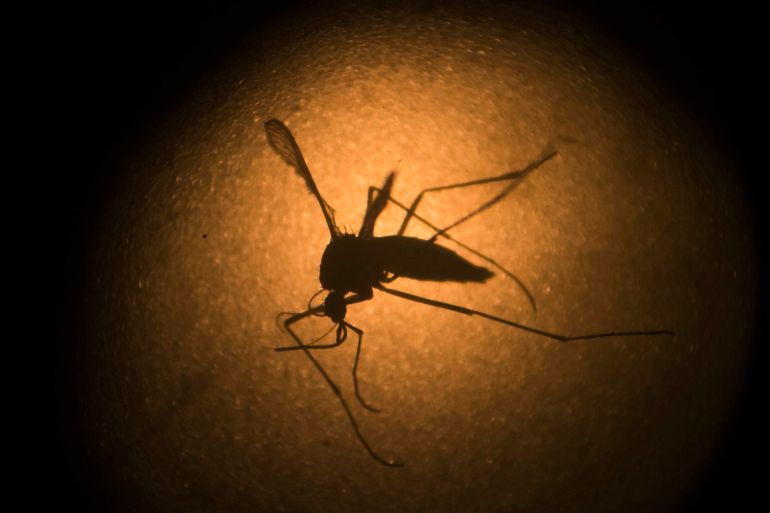Introduction to Eastern Equine Encephalitis (EEE)
Eastern Equine Encephalitis (EEE), commonly referred to as Triple E, is a rare but serious disease transmitted by mosquitoes. This vector-borne virus primarily affects the brain and central nervous system, leading to severe complications and even fatality in many cases. Despite its rarity, the virus is regarded as one of the most dangerous mosquito-borne diseases in the United States, with a mortality rate of approximately 30%. The significance of understanding Triple E lies not only in its deadliness but also in its potential to cause widespread outbreaks.
The primary vector for EEE are mosquitoes that breed in swampy areas, with the Culiseta melanura mosquito being the most common carrier in the wild. However, the virus can cross over to other mosquito species that feed on both avian and mammalian hosts, including humans. This zoonotic nature of the disease underscores a critical aspect of its epidemiology and the challenge in containing its spread. Awareness and preventive measures become crucial, especially in endemic regions.
Typically, the transmission cycle of EEE involves birds and mosquitoes in a natural reservoir. However, when transmission extends to humans, it does not continue from person to person but remains a dead-end host. This attribute of the transmission cycle is essential in understanding the dynamics of disease spread and establishing effective control strategies. The following sections will delve deeper into the symptoms, diagnosis, treatment, and preventive measures related to EEE.
Symptoms and Diagnosis of Triple E
The symptoms of Eastern Equine Encephalitis can be devastating and swift. Initial symptoms typically manifest between four to ten days after a mosquito bite and include headache, high fever, chills, and vomiting. As the virus progresses, it can quickly lead to more severe neurological symptoms such as disorientation, seizures, and coma. The rapid progression of these symptoms is a hallmark of EEE, emphasizing the need for immediate medical attention.
Diagnosing EEE involves several steps, primarily focusing on patient history and symptom analysis. Laboratory tests play a crucial role, wherein samples of cerebrospinal fluid (CSF), blood, or brain tissue are tested for the presence of the virus. Techniques such as PCR (polymerase chain reaction) are commonly employed to detect viral RNA in these samples, offering a high degree of specificity and sensitivity.
Due to the severity and rapid progression of the disease, medical practitioners often have to act swiftly to manage symptoms and prevent further neurological damage. Magnetic resonance imaging (MRI) and electroencephalography (EEG) may also be utilized to assess brain inflammation and electrical activity, respectively. These diagnostic tools are critical in differentiating EEE from other encephalitic conditions and ensuring timely and appropriate treatment.
Treatment and Management of EEE
Currently, there is no specific antiviral treatment for Eastern Equine Encephalitis. Management of the disease primarily focuses on symptomatic relief and supportive care. For severe cases, hospitalization is required, and treatments may include intravenous fluids, respiratory support, and medications to reduce brain swelling and seizures. The intensive care approach is essential to manage the complications arising from the acute phase of the disease.
Due to the lack of a direct cure, the focus often shifts to preventive neurology and critical care. Patients might need rehabilitative services post-infection to deal with potential neurological sequelae. Physical therapy, occupational therapy, and speech therapy may be necessary depending on the areas of the brain affected and the severity of the damage. The multidisciplinary approach helps in maximizing recovery and improving the quality of life post-infection.
Research is ongoing in the development of a vaccine for EEE. Currently, a vaccine exists for horses, which is regularly used in endemic areas but no such preventive measure is available for humans. The development of a human vaccine remains a priority in the scientific community, given the deadly potential of the virus and the increasing frequency of outbreaks.
Prevention Strategies for Eastern Equine Encephalitis
Prevention of EEE largely hinges on controlling mosquito populations and minimizing individual exposure to mosquito bites. Public health strategies include mosquito control programs that involve surveillance of mosquito populations, larvicidal treatments in water bodies, and adult mosquito control via safe insecticide fogging.
On an individual level, preventive measures include using insect repellent, wearing long sleeves and pants while in wooded or swampy areas, and ensuring homes have good screens on windows and doors to prevent mosquitoes from entering. It is also advisable to avoid outdoor activities during peak mosquito activity times, such as dusk and dawn.
Community participation is crucial in prevention efforts. Public education campaigns can raise awareness about the risks of EEE and effective prevention techniques. Communities can also implement local measures such as eliminating standing water to disrupt the mosquito breeding cycle, thus reducing the overall number of mosquitoes capable of transmitting the virus.
Impacts and Future Challenges
The impact of Eastern Equine Encephalitis extends beyond the immediate health effects. Outbreaks can lead to significant economic burdens due to increased healthcare costs, the need for mosquito control programs, and in severe cases, long-term disability that can affect an individual’s ability to work. The psychological impact on affected families and communities can also be profound.
Future challenges include dealing with the potential increase in EEE cases spurred by climate change. As global temperatures rise, mosquito populations are likely to increase and expand geographically, potentially leading to more frequent and widespread outbreaks of mosquito-borne diseases including EEE.
Continuing to enhance public health infrastructure to better surveil and control mosquito populations will be essential. Additionally, ongoing research into vaccine development and antiviral treatments is crucial to mitigate the effects of EEE. Cooperation between government bodies, health organizations, and communities will play a pivotal role in managing the societal impact of this deadly virus.









